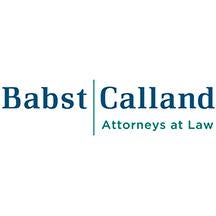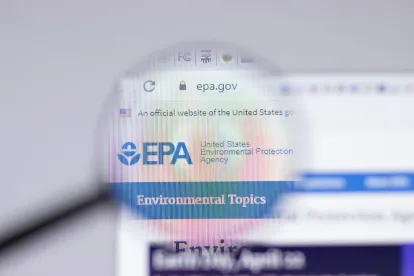In a final rule published in the Federal Register this Halloween, which we previewed at the time of proposal, Environmental Protection Agency (EPA) increased the reporting requirements for per-and-polyfluoroalkyl substances (PFAS) and other chemicals of special concern under the Emergency Planning and Community Right-to-Know-Act, 42 U.S.C. §§ 11001-11050 (EPCRA), and the Pollution Prevention Act, 42 U.S.C. §§ 13101-13109 (PPA). 88 Fed. Reg. 74360. EPA believes that these changes will provide regulators, industry, and the public with more insight into the presence of these chemicals. The rule will take effect on November 30, 2023, and will apply to the reporting year beginning on January 1, 2024.
EPCRA § 313 establishes a toxics release inventory (TRI) that requires certain facilities manufacturing, processing, or using chemicals above certain threshold amounts to report environmental releases and waste management activities for those chemicals on an annual basis. PPA § 6607 requires facilities to report pollution prevention and recycling data for chemicals listed on the TRI, as well. Among the chemicals listed on the TRI, EPA has designated certain chemicals as “chemicals of special concern.” See 40 C.F.R. 372.28. Chemicals of special concern are excluded from de minimis exemptions, as well as the use of simplified reporting forms and range reporting. Historically, chemicals of special concern were those that EPA had identified as persistent, bioaccumulative, and toxic.
As part of the National Defense Authorization Act for Fiscal Year 2020 (NDAA), Congress established two methods for adding PFAS to the TRI. Section 7321(b) of the NDAA added 14 PFAS by name or Chemical Abstract Service Registry Number and other PFAS that met specified criteria. Section 7321(c) of the NDAA provided that additional PFAS would be automatically added to the TRI effective January 1 of the calendar year subsequent to the occurrence of one of the following enumerated triggers: (1) EPA finalizes a toxicity value for the PFAS; (2) EPA makes a covered determination for the PFAS, i.e., a determination made by rule under the Toxic Substances Control Act (TSCA) section 5(a)(2) that a use of a PFAS or a class of PFAS is a significant new use; (3) the PFAS is added to a list of substances covered by a covered determination; or (4) the PFAS to which a covered determination applies is added to the list published under section 8(b)(1) of TSCA and is designated as an active chemical substance under TSCA § 8(b)(5)(B). Section 8(b) of TSCA requires EPA to compile a list of each chemical substance manufactured, processed, or imported in the United States. To date, 189 PFAS have been added to the TRI.
The final rule designates all PFAS listed, or to be listed, on the TRI as chemicals of special concern. This means that PFAS are no longer eligible to rely on the de minimis exemption that allows facilities to exclude small concentrations of chemicals in mixtures or other trade name products from release and waste management calculations. It also means that facilities can no longer rely on reporting ranges for releases or waste management transfers of less than 1,000 pounds but must, instead, report whole numbers. And it means further that facilities can no longer use the simplified Form A, which does not require reporting of release or waste management volumes, but must instead use the more detailed Form R.
In addition to designating PFAS as chemicals of special concern, EPA also eliminated a de minimis exemption in Supplier Notification Requirements that exempted suppliers from providing notifications for chemicals of special concern in mixtures or trade name products if the chemicals of special concern were present at concentrations below 1% of the mixture (or 0.1% for carcinogens). Because the de minimis exemption was based on concentration rather than amount, a mixture could include chemicals of special concern in excess of reporting thresholds without the purchaser being aware. A 100,000 pound mixture with a 0.9% concentration of PFAS, for instance, would include 900 pounds of PFAS—nine times the reporting threshold established under the NDAA—without imposing supplier notification requirements. Notably, elimination of this de minimis exemption affects not only PFAS but all chemicals of special concern.
The final rule will significantly increase visibility into the use of PFAS. By eliminating the de minimis exemption for chemicals of special concern in Supplier Notification Requirements, purchasers will have information about PFAS concentrations in mixtures and other trade name products used in their own businesses. And by eliminating the de minimis reporting exemption, as well as the availability of other burden reduction tools for chemicals of special concern, both the number and accuracy of reports should increase.
As for the burden of this increased visibility, EPA estimates that it will affect between 623 to 2,015 entities (of which 486 to 1,333 are estimated to be small businesses) and cost between $3.32-$10.73 million in the first reporting year and between $1.58-$5.11 million in each subsequent reporting year. EPA projects that the average cost per small firm will be $7,413-$7,520, depending on discount rate, and will not exceed 1% of annualized cost impacts for even the smallest firms.
Opinions on the reasonableness of the final rule, and particularly its cost estimates, are likely to diverge widely, and litigation challenging the final rule is always possible. What the final rule signals, however, is that EPA under the current administration has identified PFAS as a priority area for regulation, and industry should plan accordingly. Indeed, under its 2021 PFAS Strategic Roadmap (available here), EPA has taken a “whole-of-the-agency approach” to address PFAS with primary directives to (1) research; (2) restrict; and (3) remediate PFAS.





 />i
/>i

